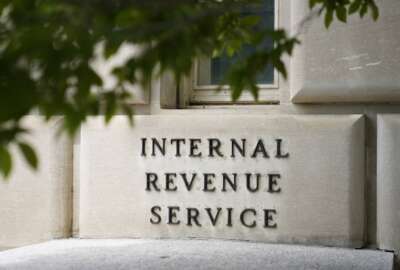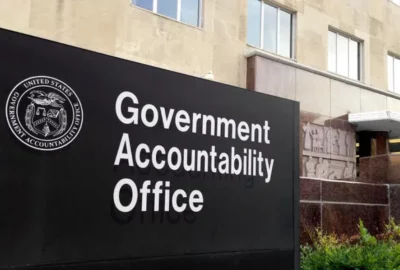Hubbard Radio Washington DC, LLC. All rights reserved. This website is not intended for users located within the European Economic Area.
Warm handovers leave some transitioning service members out in the cold
The Defense Department runs programs to help service members prepare. For those who risk loss of income or housing, DoD offers what it calls "warm handovers."
The transition from military to civilian life can be difficult. The Defense Department runs programs to help service members prepare. For those who risk loss of income or housing, DoD offers what it calls “warm handovers,” a type of personalized, one-on-one help. The Government Accountability Office (GAO) found that thousands of services members slipped through the fingers of warm handovers. For more, the Federal Drive with Tom Temin spoke with GAO’s Director of Strategic Issues, Dawn Locke.
Interview Transcript:
Tom Temin Tell us about warm handover. What exactly happens there? And who does the DoD feel that it applies to?
Dawn Locke Sure. So every couple of years, about 500,000 service members transitioned out of the military. And when they do this, they must get the support needed to have healthy, sustainable lives in the civilian world. Warm handovers are supposed to be those extra layers of support for the service members who are most susceptible to challenges when leaving the military. So that warm handover support entails DoD giving the service members, like you said, an in-person contact at an agency that could provide tangible assistance. So, for example, a VA official who can help with disability claims, or a Department of Labor official who can help with finding them a job.
Tom Temin Is this available, by the way, to those with other than honorable discharges?
Dawn Locke This is available to those who are considered at risk if they have an other than honorable discharge. They could potentially, depending on their top counselor, still get a warm handover.
Tom Temin Okay. And do we know roughly of the 500,000 that I believe you said every five years the transition out? It’s a fairly small number that they deem needing the warm handover.
Dawn Locke It could be considered small, I don’t know, depending on what you consider small. So in the two year period that we looked at, there’s about 45,000. There’s more than 45,000 who are considered at risk of challenges when they transition. So for example, they don’t know how they’re going to earn a living. And of these, sadly, more than 4300 who were at risk are slipping through the cracks. So these individuals who are at risk of not potentially having food or shelter or transportation are also not getting the warm handover.
Tom Temin Right. So how did you find that information? You looked at the roles of DoD that they deemed and then the number they actually had a handover for.
Dawn Locke So yes, this is all based on DoD data that we received in their transition assistance data.
Tom Temin And do we know other characteristics of what makes people at risk? Was that part of the study? Do they have mental issues? Do they have post-traumatic stress disorder that kind of thing?
Dawn Locke We did look at the demographics. So they could have have health issues. We did know that the majority, so about 50 to 60% who are at risk are under the age of 24 and typically have four or fewer years of service. And that’s because this particular population tends to struggle more with making informed decisions about finances or housing. But we also saw that those who are having to leave the military quickly. So, for example, for a short term separation or a medical separation may also struggle and could benefit from a warm handover. So for example, they may not have the time they need to prepare for a transition or they’re injured or they’re ill. And a warm handover could help with continued care via the VA.
Tom Temin And warm handovers. Is it just one meeting and goodbye, Charlie, or could the warm handover be a series of meetings or counseling?
Dawn Locke Yeah, hopefully it would be a series and tell that service member gets what they need. So for example, at the VA they could be provided a person who will help with resume writing, a person who will help find them jobs, a person who will help with preparing for an interview, those type of things.
Tom Temin We’re speaking with Dawn Locke. She is the director of strategic issues at the Government Accountability Office. What did you find is the reason so many people, almost 10% of them, are slipping through and not getting that warm handover.
Dawn Locke So unfortunately, DoD does not know the reason that these individuals are slipping through. What we did find is that commanders are struggling to understand their roles and accurately verifying warm handovers. So, for example, only two-thirds of the warm handovers that were given were verified by a commander. And, even more egregious, we found that 77,000 service members were verified as having a warm handover who didn’t actually receive one. In addition to that, we found that DoD doesn’t know whether warm handovers are even helpful because they’re not following up with service members once they become vets, to see if that in-person connection provided tangible help to them.
Tom Temin Yeah, that was my next question you’ve answered is, do they know whether it’s doing any good with respect to people getting jobs and housing and having some stability in their lives?
Dawn Locke Right. And they just don’t, they don’t because they haven’t followed up.
Tom Temin In Veterans Affairs they don’t have much data on that particular piece of it either.
Dawn Locke That is correct. And that is why. So Veterans Affairs is working with DoD to run a pilot to try to collect more information on those warm handovers, but that pilot still is going to provide limited information and will not be able to tell us whether the program is effective.
Tom Temin Wow. So I can imagine what some of your recommendations were. Let’s go over those.
Dawn Locke Yeah, so we did. We made a few recommendations, eight in total. And those boiled down to having DoD better use the data and contact information to ensure a person to person connection happens. We also are, recommending that DoD ensure commanders accurately verify the warm handovers and that they assess and share information on the helpfulness of warm handovers. So that’s key. We need the DoD to determine if these warm handovers are actually helpful. And then we’re also recommending to the DoD Department of Labor and the VA that they identify criteria to determine whether to continue the pilot projects that I spoke of earlier that could help enhance warm handovers.
Tom Temin It sounds like everybody thinks everybody else is responsible for this, and therefore nobody is really taking single ownership of identifying the people, verifying the handovers happen, and then following up to see if they were useful.
Dawn Locke I’m not sure if that is the case. What we did hear from the agencies that they agreed with all of our recommendations, and they each identified steps that they’re going to take to implement the recommendations. So, for example, DoD plans to use the data to better understand the warm handovers while also helping commanders more accurately verify them. And then the VA and DOL did provide statements that they’re committed to making improvements. So, for example, the VA is seeking specific information to determine how to fund its pilot at all the military installations.
Tom Temin In some ways, the biggest beneficiary of this program, potentially besides the service members themselves, is Veterans Affairs, because if people have compounded problems in their lives, it’s going to some way or another end up on the doorstep of VA.
Dawn Locke Correct. They are a huge service provider, as you know, to service members. And it would benefit them greatly to get this right.
Tom Temin And by the way, do we know the percentage of women versus men that are part of the handover program?
Dawn Locke I don’t have the percentage to memory, but there are fewer women who receive a warm handover. Just by the nature of there are fewer women in the military.
Copyright © 2024 Federal News Network. All rights reserved. This website is not intended for users located within the European Economic Area.
Tom Temin
Tom Temin is host of the Federal Drive and has been providing insight on federal technology and management issues for more than 30 years.
Follow @tteminWFED
Related Stories
Federal security agency struggling with new IT system for tracking contract guards
Related Stories
-
GAO reviews how the VA is training its claim processors Agency Oversight





